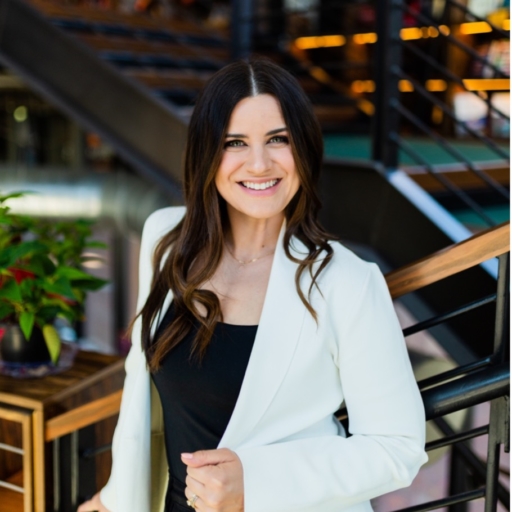By Erica Pieczonka, Dream Lab Coaching
Keeping up with today’s personal and professional demands can be a bit of a juggling act. Despite being told that time management is the solution to our ever-growing to-do lists I am here to tell you it’s NOT. Time management is out, and energy management is in! Why? Because energy management offers a personalized and holistic approach to managing life’s demands improving both our performance and well-being. Keep reading to learn why energy management is so powerful and how you can start applying it to your life.
THE POWER OF ENERGY MANAGEMENT
I can trace the beginning of my love affair with energy management back to the beginning of my second pregnancy (summer 2022). I found myself with a lot on my plate personally and professionally, and a narrow window of time where I had the energy to do it. Mornings were where I could shine, but by 1:00 pm I was completely depleted and needed a few hours of rest before I could get out of bed and re-engage with what needed to happen next. I found success by (1) focusing on the most critical tasks during that morning window and (2) releasing guilt around needing a lot of rest in the afternoon. By allowing myself to replenish my energy, I had more to work with later in the day. Force gave me nothing, rest gave me everything.
That’s the thing about energy. While time is a finite resource, energy is a renewable resource. The traditional approach to time management fails to consider the varying levels of energy and focus we possess throughout the day and our varying engagement toward specific tasks. Think about the last time you didn’t sleep well, weren’t feeling well, or simply had to do something you didn’t want to. You have the TIME to do the work but without the ENERGY, it’s just not happening. Forcing focus in these moments is often futile and rarely leads to your best work.
Energy management offers a whole-person perspective, recognizing that productivity and performance are deeply influenced by all parts of you (physical, mental, emotional, and spiritual). It is also concerned with how we balance energy expenditure with rest and recovery. By paying attention to our energy, we can do more with less time while….
- Improving Overall Well-Being. Hustle culture sells the notion that being busy equals success. It encourages long hours at the expense of self-care and insinuates that rest is something you have to earn. The result of which is not increased performance (shocking!) but rather, burnout. Instead of allowing our energy withdrawals to exceed our resources, energy management encourages us to replenish our used energy through activities such as meditation, exercise, social connection, and sleep. By honoring our need for rest and leisure we build resilience, prevent burnout, enhance well-being, and create a greater sense of balance and peace.
- Enhancing Fulfillment and Meaning. Living a life that honors what is most important to us is what brings fulfillment. Energy management facilitates fulfillment by aligning our focus with our values (what’s important), passions (what we love), and strengths (what we are good at). Activities connected with these three elements are energizing, motivating, and deeply meaningful, and meaning matters! Research has shown that employees who found their work meaningful are happier, more productive, and harder working. In addition, individuals with a greater sense of meaning and purpose live longer, perform better on cognitive tests, show fewer symptoms of depression, and are more stress tolerant.
- Unlocking Peak Performance. Energy management not only ensures that we have the fuel we need to get sh*t done, it also allows us to understand when to do what. Every human has natural energy rhythms that fluctuate throughout the day. By understanding your unique rhythms you can align your high-impact tasks/deep work with when you feel most energized. Thus, instead of resorting to force, you learn to work with your natural ebbs and flows, maximizing your impact and efficiency (while maintaining well-being).
MAKING THE SHIFT FROM TIME TO ENERGY
Ready to get started? Follow these 3 simple steps to build awareness of how your energy works and put your new insight into action!
-
UNDERSTAND YOUR ENERGY
When I started researching energy management, I got lost down a rabbit hole learning about all the complexities of what causes individual energy fluctuations. While all that information was interesting, I realized that there was a much simpler way I could learn about my own energy – enter the Energy Audit. Here’s how you do it:
For the next week, pay attention to what energizes and drains you within your work and personal life.
- Signs you’re depleted: You feel overwhelmed, overstimulated, drained, and/or are needing a break. Your emotional regulation is off and you don’t feel like you are showing up like you normally do.
- Signs you’re energized: You feel lit up, excited, fulfilled, ALIVE. You feel like the best version of yourself, ready and capable to take on life and work demands.
Use a journal or notebook to create an Energy Log (like the one below):
| Date/Time | Activity | Observations | Rating (0-10) |
| M 2/13 6:15a | Sleep | Slept 8 hours, feel refreshed | 8 |
| M 2/13 6:30a | Mindless scroll for an hour in bed, first thing | 3 | |
| M 2/13 3:00p | Meeting with A.L. | Zoom conversation with A.L. from home, felt frustrated | 2 |
| M 2/13 5:00p | Yoga Class | Quiet environment, felt calm and relaxed | 8 |
- Note typical activities/events and how they impact your energy. For example: how much sleep you got, what you ate, breaks you take (or needed to take), who you spent time with, physical activity, tasks performed, etc. Also, notice how your energy naturally fluctuates throughout the day. Typically, we have the most energy in the morning hours from 9-11 am and experience a post-lunch energy dip in the afternoon from 1-3 pm. Take note of how this manifests for you!
- For each activity/event, note your observations: what you are doing, who you are with, the time of day, the environment you are in, how you feel, etc.
- Rate your energy after each activity on a scale of 0 (completely drained) to 10 (completely energized).
After completing the audit, use the data you collected over the last week to summarize what drained and energized you in a table like the one below:
| Energizing | Draining |
|
|
Building awareness of what gives you energy and depletes it allows you to determine what you want to spend energy on, what you don’t, and where you need to set boundaries. We’ve all heard the saying, “One cannot pour from an empty cup”. The main objective of the Energy Audit is to give you the information you need to keep your cup full (and avoid burnout). Now that you have a good idea of your cup fillers and drainers, it’s time to come up with a plan to translate this new insight into action.
-
CREATE YOUR ACTION PLAN
Take a moment to review the information you gathered in step one. As you review, what themes are you noticing? Where do you have the most desire to change? Then, brainstorm the actions you want to take to improve your energy management. As a rule of thumb, you want these actions to:
- Balance depleting activities/events with energizing ones. Example from Step 1: I am really depleted after meeting with A.L., but I need to keep meeting with them due to work obligations. To balance my energy, I plan to go for a 15 min walk in the sunshine after we meet.
- Replenish diminished energy resources. Example from Step 1: I get a lot of energy from yoga so I plan to commit to yoga practice at least 3x a week to keep my cup full.
- Protect your energy from drainers. Example Step 1: I noticed that scrolling first thing in the morning drains me and I’d also like to start my day in a more nourishing and productive tone. I decided to set a boundary with myself – no technology in the morning.
Boundaries: The key to protecting your energy
We can’t talk energy without a brief conversation about boundaries. Boundaries are a critical component of energy management because they protect your energy from activities, people, and environments that drain you. After your energy audit is it likely you will uncover new opportunities for boundaries with BOTH yourself and others.
The key to good boundaries is simply identifying what you’re saying YES and NO to. Use the following prompts to reflect on the boundaries you need to create and include in your action plan.
- Make your To Do/To Don’t list by answering the following questions: What energizing/calming activities are you saying YES to? What draining activities can you say NO to (those that are non-essential, don’t align with your values etc.)?
- What boundaries do you need to set with yourself to make this happen? Technology is a big one for most people (as seen in the example audit). How often are you engaging with email, text messaging, and social media? Be thoughtful about what feels good and when it starts taking something away from you.
- What boundaries do you need to set with others and how will you make them aware? When it comes to boundaries with others, focus on what’s in your control. For example, you can choose to spend less time or cut ties with a friend who drains you. That’s very different from a co-worker that you have to engage with on a regular basis. In the latter case, aim to balance the energy-depleting interaction with one that is energizing or calming. Regardless of the boundary, make sure you communicate it clearly, even if it’s difficult. You can’t expect others to respect boundaries that you haven’t directly explained.
Finalize your action plan by listing the…
- Actions you will take
- Boundaries you are setting with yourself
- Boundaries you will set with others WITH a clear timeline for when you will have those conversations
-
ESTABLISH ACCOUNTABILITY
The best way to activate your action plan and create accountability to stick to it is to use your calendar to honor your energetic needs. Consider the following as you move through this process:
- Block time for deep work during the time of day you tend to have the highest energy.
- Schedule calls, meetings, admin, and email when you have lower energy.
- Schedule time to replenish your energy through rest and recovery throughout the day. There are a few ways to accomplish this:
- Schedule frequent breaks. In general, you should plan to take breaks at least every 90 minutes. Pay attention to when you might need a break and adjust as needed. For peak performance and self-care, take a break after deep work to replenish the energy needed to continue on with your work day.
- Balance high-arousal and/or depleting moments with calm/energizing activities. For example, if speaking in a big meeting makes you anxious or takes a lot of energy away from you, afterward do something that calms you, like going for a walk.
- Schedule daily energy-giving habits. Look at your list of energizing activities and determine which you want to engage in each day.
Once you have the plan in action, take time to regularly reflect on your progress and refine your approach with what you learn along the way. Give yourself permission to experiment, try new ways of doing and being, and release the perspective that rest has to be earned. Most of all, have fun with this and celebrate your wins along the way!
WANT MORE?
Check out my Life Design Intensive! In this 90-minute session, we focus on giving you more clarity, balance, and fulfillment in your life and career utilizing energy management principles. You get a workbook, visualization recording, and a mini-training to help you get the most out of our time together. I created this offer as a way to meaningfully create change that you can implement right away!
About Erica Pieczonka, Founder Dream Lab Coaching
Erica is an Organizational Psychologist (Ph.D.) and Holistic Leadership Coach. Prior to entrepreneurship, Erica was a Director of Talent for a Fortune 200 company for 7 years. In this role, she lead talent assessment, organizational development, and leadership development projects. She left her corporate gig to pursue coaching and consulting full-time in 2021. Her coaching practice (Dream Lab Coaching) empowers women leaders and working moms to define success on their own terms, align their focus to what matters most, and thrive in all the roles they play. She is also an adjunct faculty coach at the University of Denver where she teaches a leadership certification course to frontline managers. In her free time, she loves reading, Pilates, walks in the sunshine, and spending quality time with her husband and 2 young sons (3 and 4 months).




